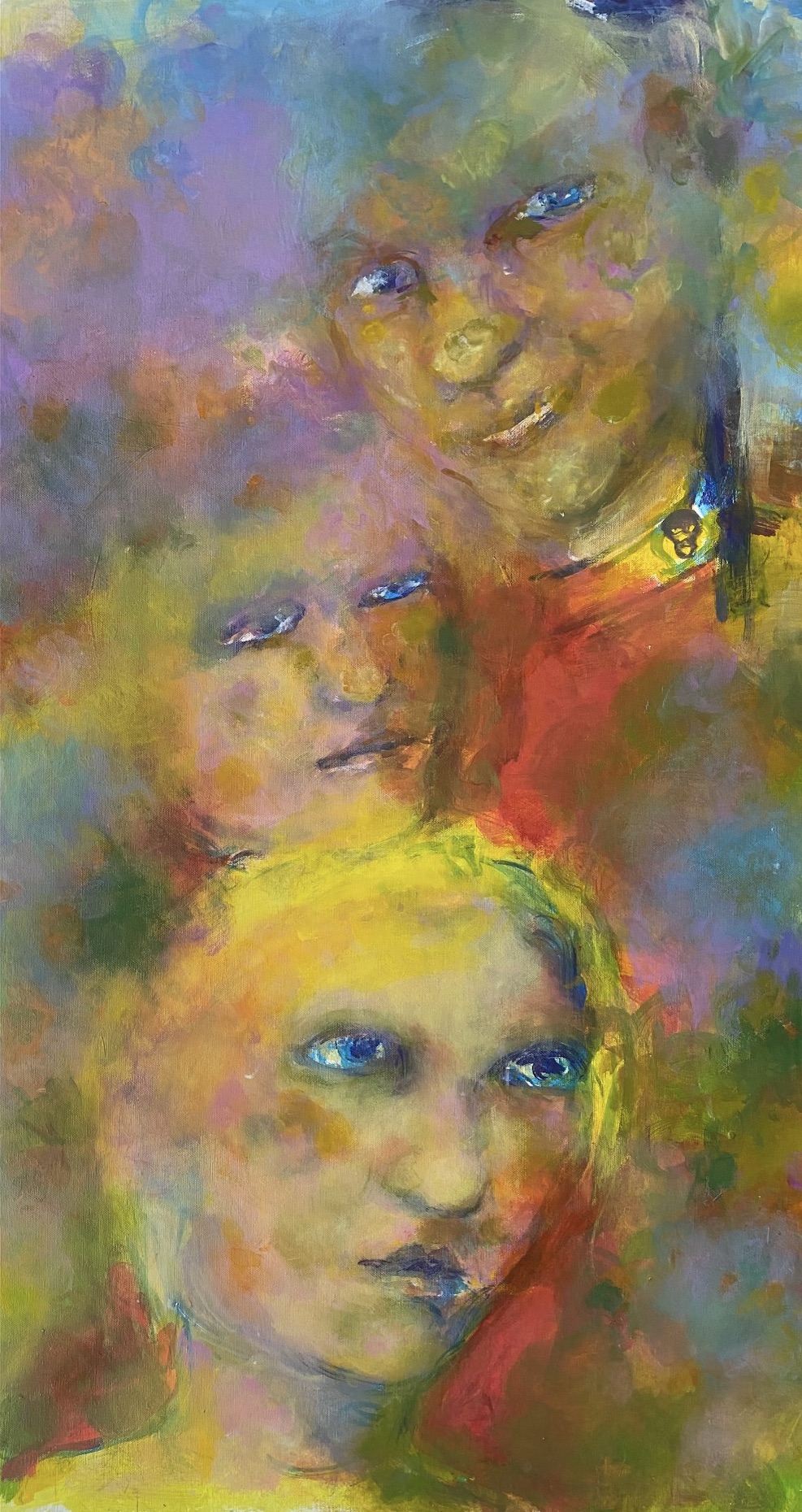Doris Jauk-Hinz, Photomontage ... IM FLUSS Installation, 2024
WALKS & DESTINATIONS: Finding home in departure.
Curated by Irmi Horn.
Opening: Vice town mayor Mag.a Judith Schwentner, Members of the Styrian Parliament Univ.-Prof.in Dr.in Sandra Holasek& art historian Mag.a Marlies Sch├Čck, MA
The Styrian artists Doris Jauk-Hinz, Anne L├╝ckl and Gerhard Kubassa meet the stimulus of life’s challenges in different genres and gestures.
Intimate, far-reaching, playful and aesthetically challenging, they present us with manifested criteria of their travelled experiences on the way to their personal goals, which for artists can also be an impulse for the viewer in the designed format and thus also show insight and outlook into new worlds of experience. Modes of interpretation merge into a starting point for a labyrinthine encounter with oneself and the way we interact with each other in our homeland.
Doris Jauk-Hinz, born in Frohnleiten / Styria, interdisciplinary artist, lives and works in Graz.
1976 -1981 studied at the University of Applied Arts, Vienna, graduated in 1981.
1986 Co-founder of grelle musik <—> Intermedia: Science and the electronic arts and the project series Klang im Intermedium (together with Werner Jauk); Visuals GRUPPE 01; 1998 Von der Logik des Visuellen zur Logik des Auditiven, lecturer at KF-Uni Graz.
Artist in Residence: 2011 City of Judenburg (A); 2001 UMAS United Media Arts, Durham/Ontario (CAN); 1981 Savaria Museum, Szombathely (H).
Member: 1982 – 1992 Eva & Co; 1984 – 1996 Gruppe 77. Board member: 2004 – 2007 mur.at; since 1995 Kunstverein W.A.S. (Womyn’s Art Support).
Member of the commission: 2003 – 2005 Evaluation of the Styrian Cultural promotion and involvement in the drafting of the Styrian Cultural Promotion Act (2005).
Curator: since 2013 “VAGINAMUSEUM.at”, founded by Kerstin Rajnar.
The observational view of current social manifestations was and is the starting point for my artistic work. Gender relations in different everyday environments are at the centre of my attention.
The thematisation of and reaction to “problem zones” within the existing value systems takes place from different perspectives and by means of diverse forms of expression and methodical working methods, such as the deconstructivist expropriation of action structures with male connotations. Objects, photos and videos are brought together in staged intermedia installations and (travelling art) projects and in some cases also transformed into collective forms of design in cooperation projects. Communicative qualities of technical media are utilised as well as process-based work and social action in performative interactions in public space and in the defined art space.
The permanent implementation of self-explanatory and self-disseminating art objects in everyday living spaces, such as market economy systems and infrastructural communication and transport systems, enables the fusion of “art and life”. The targeted everyday use of (art and life) objects and systems in artistic processes links different living environments in plural societies. Art is in motion, art mobilises. Art in public space / in everyday life is political.
… IN THE FLOW
Installation, 2024
Water is life, the source is departure. From the little stream to the river, water is in a state of flux, ideally structured in a self-determined way on its way to a common and global body of water. This river is subject to a constant cycle and, metaphorically speaking, symbolises life.
An exemplary selection of snapshots of the states of flow will be installed in homeopathic doses in the KunstGarten.
www.jauk-hinz.mur.at
Anne L├╝ckl trained in painting at the Ortwein School in Graz and spent four years working as an artist in Neuch├ótel in western Switzerland before settling in Graz as a freelance artist. Her works can not only be seen in exhibitions; her presence in public space (destination: Andritz terminus) is a central concern of hers. The technically diverse works – drawings, paintings, collages, partial sculptures on canvas and paper – focus on her interest in people. They are less concerned with their image than with their abysses, depths and longings.

Anne L├╝ckl FAMILY, 2024

Anne L├╝ckl HEIMATSUCHENDE,
Installation 2024
Born 1974 in M├╝rzzuschlag. Lives and works in Graz and in H├Čnigsberg near M├╝rzzuschlag.
Kubassa plays with contours, spaces and thoughts. Realises in painting, sculpture and printmaking.
Since 2010, in addition to painting and drawing, he has also created works in bronze.
Kubassa likes to use natural materials for his models: Branches, bananas; but also elastic fabrics.
The artist’s studio is located in the church premises of the H├Čnigsberg parish.
Kubassa writes:
‘My approach to art is very playful.
I love experimenting in the studio, one thing leads to another… I stumble from experiment to experiment.
But on the other hand, I am also a planner. That comes from my time as an architect…. lots of sketches, lots of ideas….
Time and again, I see myself as an architect of emptiness and contours, I want to “play a bit of God”
Over the years I have trained in the artists’ village of Neumarkt an der Raab.
Asian woodcut, etching, bronze casting, photography…. have all characterised my work.
In sculpture, it is currently the division of objects that drives me.
I would like to mention Gordon Matta-Clark, for example, who has inspired me a lot.
I am currently working on homage series for the following artists:
Eduardo Chillida, Ai Weiwei, Rachel Whiteread, Tony Cragg, Barbara Hepworth,
Antony Gormley, Alicja Kwade, Not Vital, Helmuth Gs├Čllpointner, Erwin Wurm,
Richard Deacon, Anish Kapoor and Olafur Eliasson
I cut up photos of the artists from work catalogues and create collages.
It’s like an addiction – I could work on it all the time.
Starting with the idea of sculpturally representing the aura of a body, I realised an object, initially made of wooden sticks screwed together and covered with black fabric. This new form was the template for a bronze sculpture. The patina as a means of expressing weathering, on the other hand, creates a contrasting colourful liveliness. The result is an outside and inside. A space for thoughts. Interpretations. Exchange.
Translated with www.DeepL.com/Translator (free version)

